Compiled by Graham Sorenson, Aerial Insectivore Conservation Program Coordinator, Birds Canada
Every spring and summer, Birds Canada field technicians across the country put your support for birds into action by monitoring bird populations, protecting nesting species, and communicating with the public. The Birds Canada team really appreciates the contributions of these seasonal staff, which maximize our research and conservation impact. These positions can also be a valuable stepping stone for early career professionals. Here, some of our 2022 field staff share their lessons learned, reflections, and stories with you!
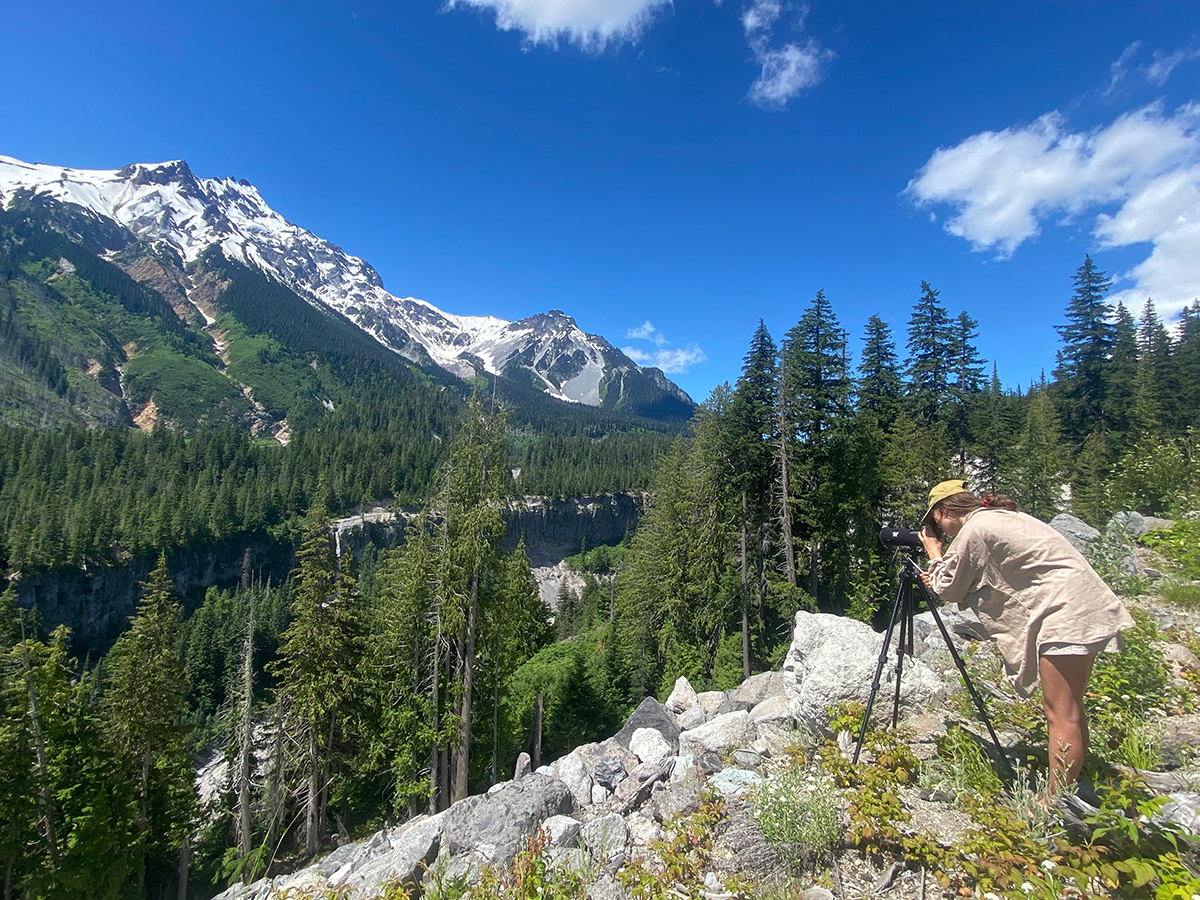
Photo: Sarah Town
British Columbia Species at Risk – Sarah Town
This summer I had the privilege of working in southwestern BC alongside my wonderful co-worker, Claudie Pageau. Our job was to find Black Swift nests and advocate for the sustainable use and management of the surrounding area. Lucky for us, Black Swifts nest in the most picturesque of places: on damp, mossy ledges next to steep waterfalls. We received great interest and phenomenal insights from birders, First Nation communities, canyoning and caving guides, park staff, and biologists across the province. We also gained a deeper understanding of what it takes to engage in meaningful consultation and collaboration with the community, a vital process that is needed in all conservation work.
Prairie Grassland Birds – Sachi Schott
Working in the pastures of Saskatchewan and Manitoba engendered a strong appreciation for the hard work of the ranchers whose lands we were fortunate to survey. This was especially true when it came to the construction of the fences we commando-crawled under to do our counts of grassland birds! Perhaps, in years to come, the threads of cotton and synthetic fabrics that we left behind on barbed wire will line the nests of the birds we were there to count… or maybe not. Regardless, the memories of the gorgeous landscape and the incredible birds and other wildlife that we saw will long outlast the scratches, scrapes, and blisters we endured while making them.
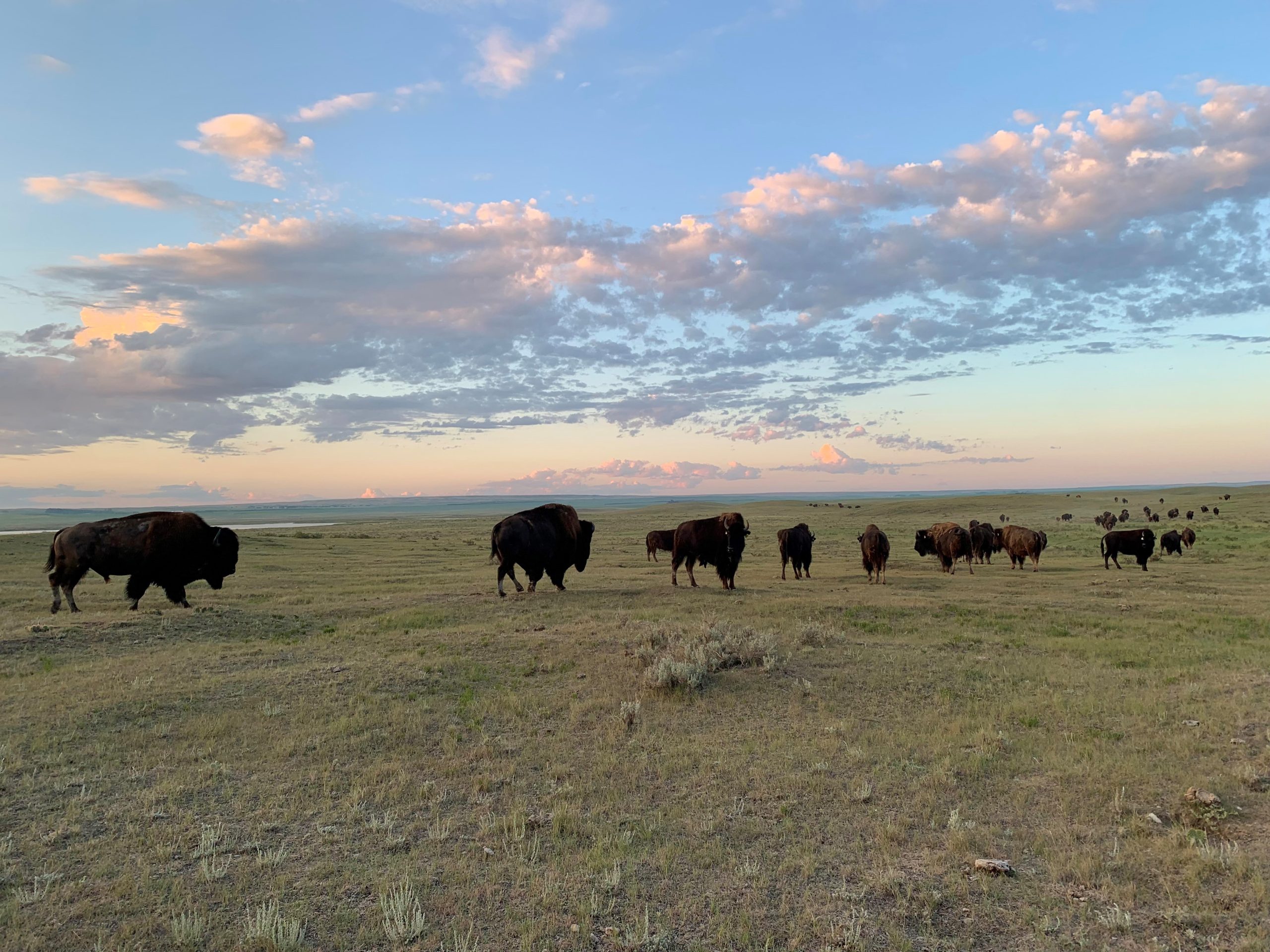
Bison Photo: Erica Alex
Prairie Grassland Birds – Erica Alex
I snapped this photo after one of my most memorable point counts (timed counts of birds seen and heard from a particular spot). This herd of domestic bison wandered by just as the sun was rising in the east and a classic prairie thunderstorm was rolling in from the west. The wetland nearby was alive with waterfowl and shorebirds, while Chestnut-collared Longspurs, Lark Buntings, and Horned Larks sang from the surrounding grassland. It was truly awe-inspiring!
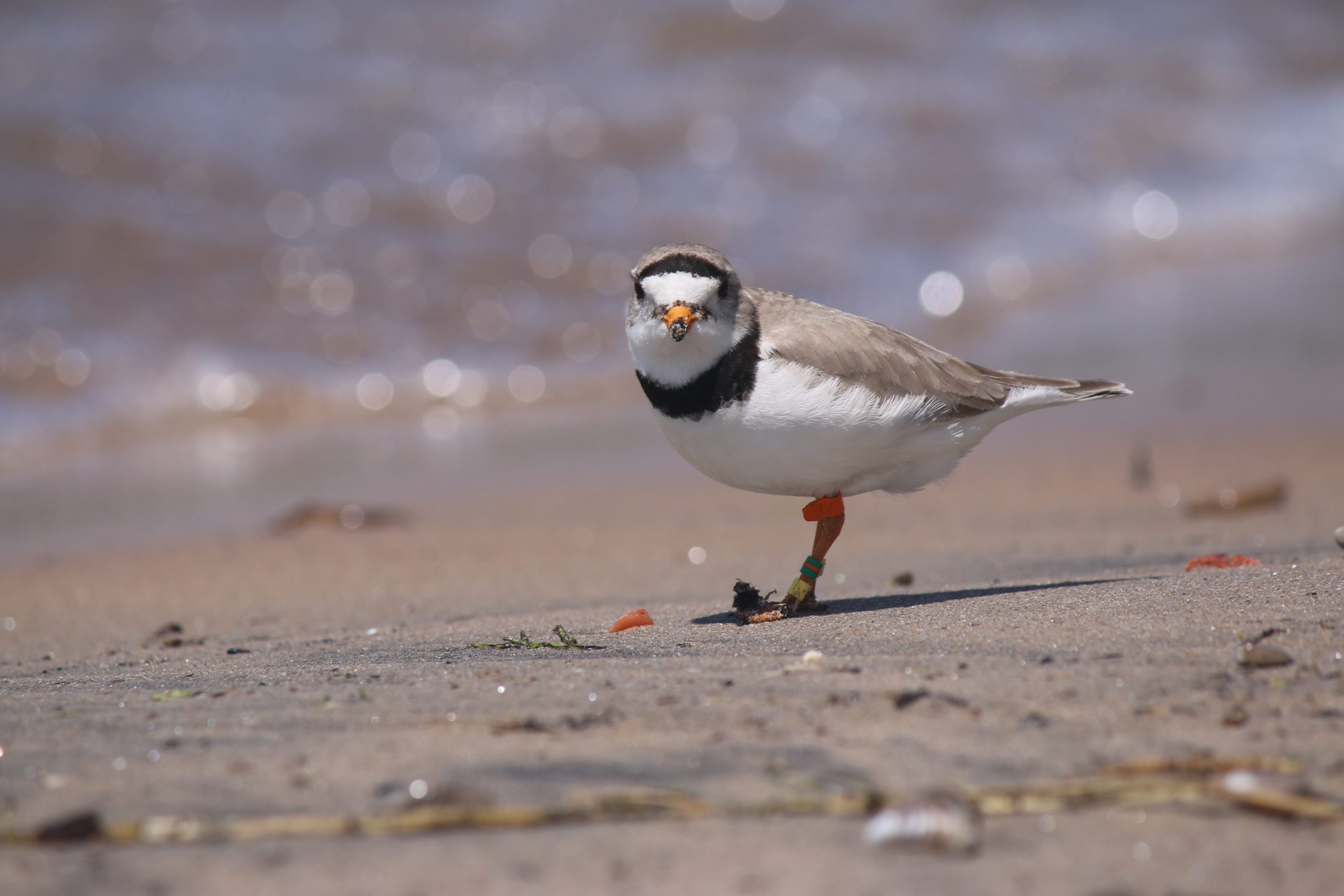
Piping Plover Photo: Sydney Shepherd
Ontario Piping Plover Conservation – Sydney Shepherd
Piping Plovers are arguably the cutest birds on the planet, and I got the pleasure of looking at them every single day this summer! I had the opportunity to work at the five nesting sites in Ontario and get to know the 10 breeding adults. At each beach, we put up fencing around the nest area, as well as predator exclosures (wire mesh that lets plovers come and go from the nest but keeps predators out) to help increase the probability of nest success. And the season was just that – a success! At the time of writing, I had watched the plovers raise 10 chicks to fledge, with two chicks remaining to hopefully join this total! It is heartwarming knowing I’m part of a larger program that directly impacts the success of Piping Plover nests, and I hope to see their population continue to grow in the future.
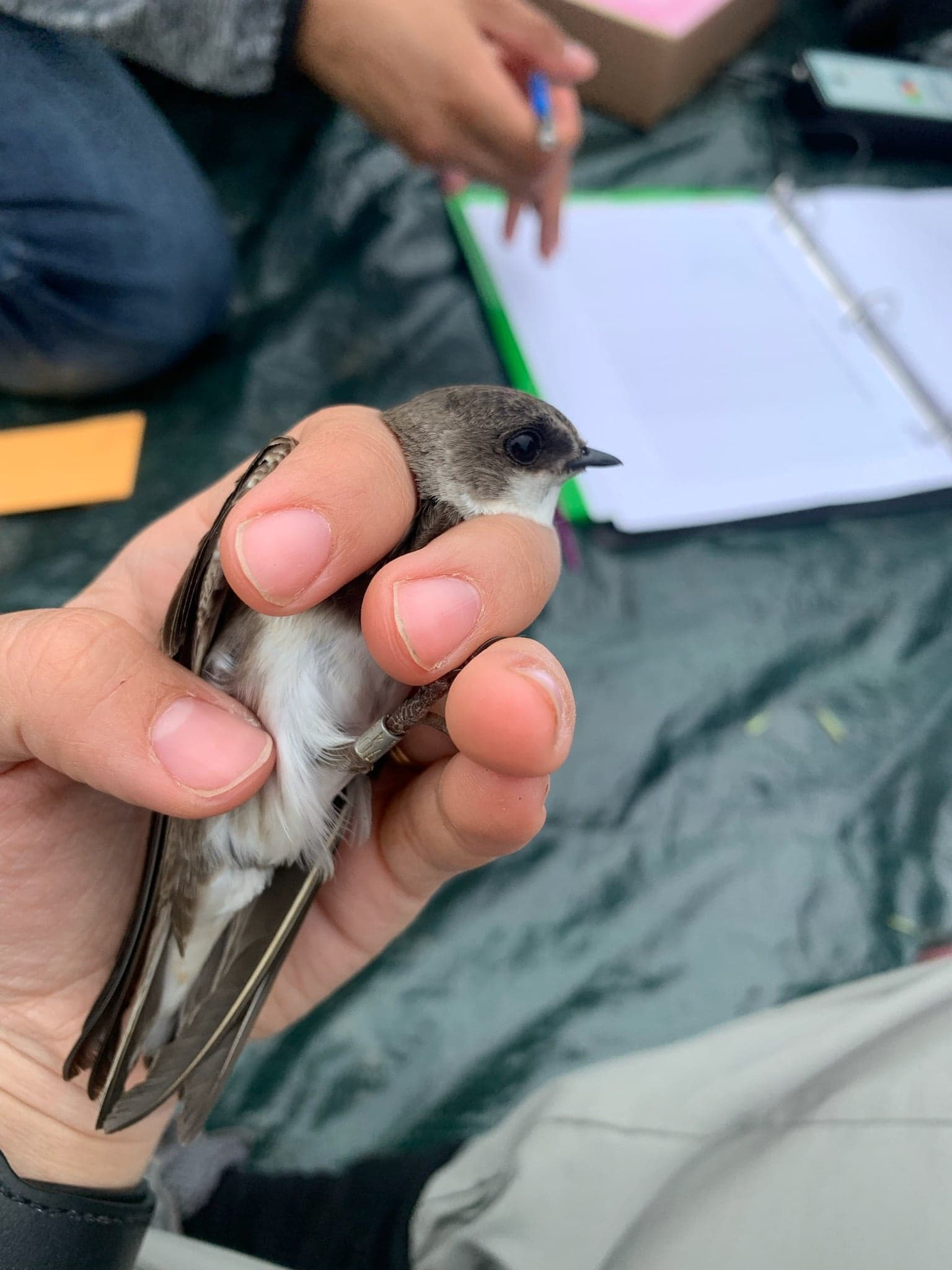
Bank Swallow Photo: Natasha Barlow
Ontario Bank Swallows – Megan Hiebert
The most exciting moment this field season was actually when I was entering data (shocking right?!). I discovered that a Bank Swallow we’d re-captured this season was a bird that I had initially banded in 2016 during my first field season, when it was a baby! A six-year-old Bank Swallow!
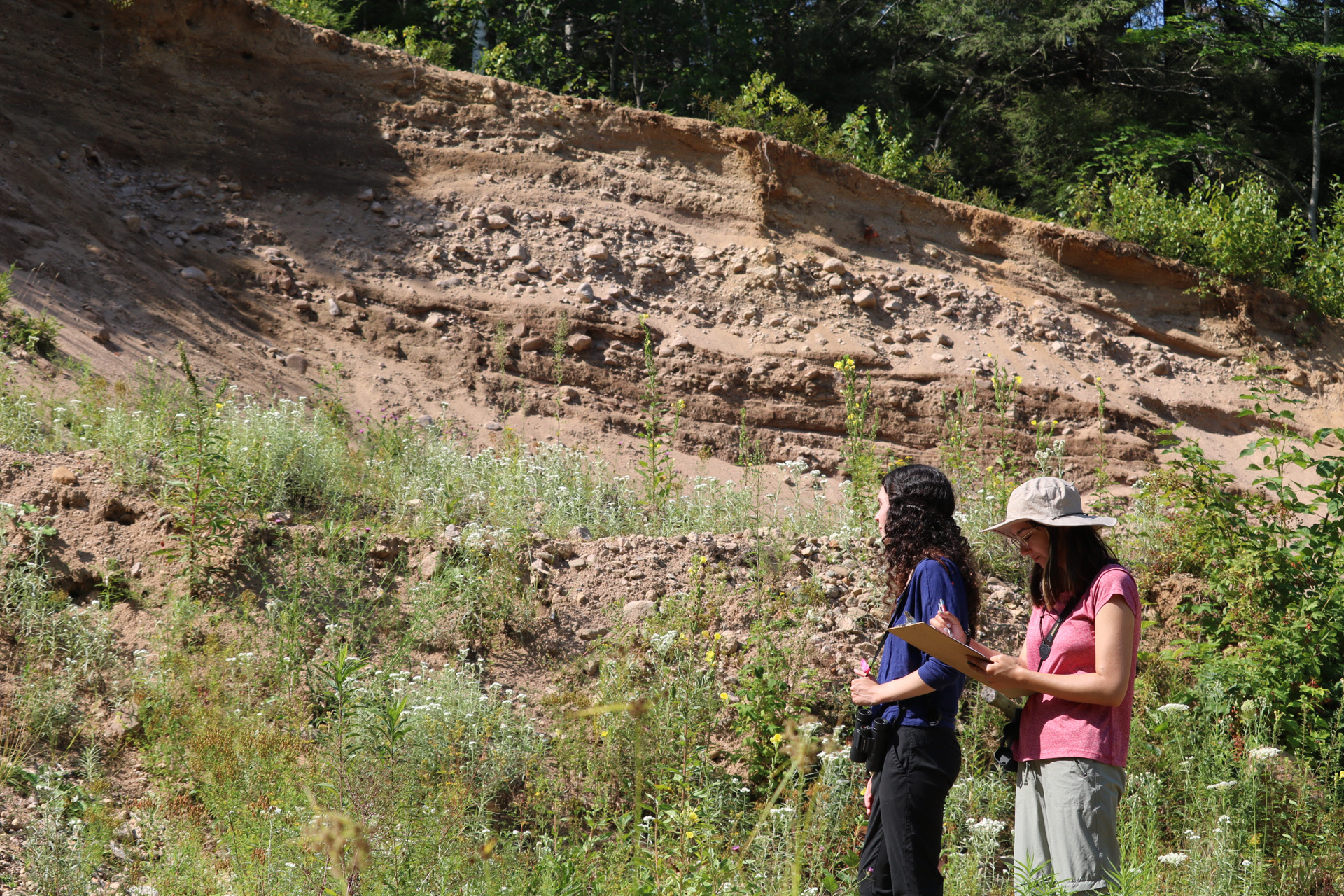
Conducting a Bank Swallow survey in Nova Scotia Photo: Meg Langlais
Maritimes Aerial Insectivores – Meg Langlais
The theme of my summer was, “I can’t believe I’m getting paid to do this,” as we drove to beautiful places in Nova Scotia to search for the sweetest little birds—Chimney Swifts and Bank Swallows. An important part of our job, besides monitoring nest and roost sites, was speaking to communities and landowners about aerial insectivores (birds that eat insects while flying, like swifts and swallows) and the importance of their conservation. Thank you, Birds Canada, for this incredible learning experience and for working to protect these important at-risk species.
Birds Canada gratefully acknowledges the generous support of funders who made it possible to hire the field technicians featured in this article: British Columbia Field Ornithologists; Clean Foundation; Employment and Social Development Canada – Canada Summer Jobs; Environment and Climate Change Canada; Nova Scotia Habitat Conservation Foundation; Ontario Ministry of Environment, Conservation and Parks – Species at Risk Stewardship Program; Ontario Power Generation; Saskatchewan Stock Growers Foundation; South of the Divide Action Plan; TD Friends of the Environment Foundation; The Conservation Trust (Manitoba); and Weston Family Foundation.
